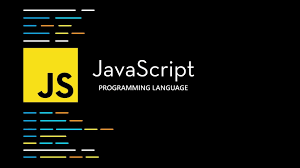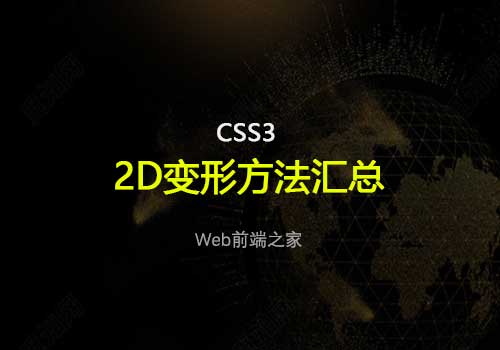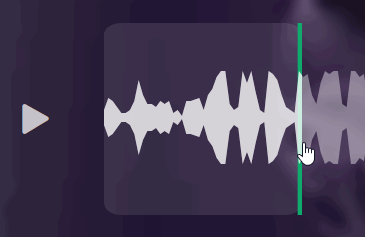
vue中的自定义指令,我们在前端开发的项目中,经常会用到,今天我们一起来学下。首先我们要知道什么是自定义指令?
什么是自定义指令?
除了核心功能默认内置的指令 (v-model 和 v-show),Vue 也允许注册自定义指令。注意,在 Vue2.0 中,代码复用和抽象的主要形式是组件。然而,有的情况下,你仍然需要对普通 DOM 元素进行底层操作,这时候就会用到自定义指令。举个聚焦输入框的例子,代码如下:
<div id="simplest-directive-example" class="demo">
<input v-focus>
</div>
<script>
Vue.directive('focus', {
inserted: function (el) {
el.focus()
}
})
new Vue({
el: '#simplest-directive-example'
})
</script>
当页面加载时,该元素将获得焦点 (注意:autofocus 在移动版 Safari 上不工作)。事实上,只要你在打开这个页面后还没点击过任何内容,这个输入框就应当还是处于聚焦状态。现在让我们用指令来实现这个功能:
// 注册一个全局自定义指令 `v-focus`
Vue.directive('focus', {
// 当被绑定的元素插入到 DOM 中时……
inserted: function (el) {
// 聚焦元素
el.focus()
}
})
如果想注册局部指令,组件中也接受一个 directives 的选项:
directives: {
focus: {
// 指令的定义
inserted: function (el) {
el.focus()
}
}
}
然后你可以在模板中任何元素上使用新的 v-focus property,如下:
<input v-focus>
钩子函数
一个指令定义对象可以提供如下几个钩子函数 (均为可选):
-
bind:只调用一次,指令第一次绑定到元素时调用。在这里可以进行一次性的初始化设置。 -
inserted:被绑定元素插入父节点时调用 (仅保证父节点存在,但不一定已被插入文档中)。 -
update:所在组件的 VNode 更新时调用,但是可能发生在其子 VNode 更新之前。指令的值可能发生了改变,也可能没有。但是你可以通过比较更新前后的值来忽略不必要的模板更新 (详细的钩子函数参数见下)。
-
componentUpdated:指令所在组件的 VNode 及其子 VNode 全部更新后调用。 -
unbind:只调用一次,指令与元素解绑时调用。
接下来我们来看一下钩子函数的参数 (即 el、binding、vnode 和 oldVnode)。
钩子函数参数
指令钩子函数会被传入以下参数:
-
el:指令所绑定的元素,可以用来直接操作 DOM。 -
binding:一个对象,包含以下 property:-
name:指令名,不包括v-前缀。 -
value:指令的绑定值,例如:v-my-directive="1 + 1"中,绑定值为2。 -
oldValue:指令绑定的前一个值,仅在update和componentUpdated钩子中可用。无论值是否改变都可用。 -
expression:字符串形式的指令表达式。例如v-my-directive="1 + 1"中,表达式为"1 + 1"。 -
arg:传给指令的参数,可选。例如v-my-directive:foo中,参数为"foo"。 -
modifiers:一个包含修饰符的对象。例如:v-my-directive.foo.bar中,修饰符对象为{ foo: true, bar: true }。
-
-
vnode:Vue 编译生成的虚拟节点。移步 VNode API 来了解更多详情。 -
oldVnode:上一个虚拟节点,仅在update和componentUpdated钩子中可用。
除了 el 之外,其它参数都应该是只读的,切勿进行修改。如果需要在钩子之间共享数据,建议通过元素的 dataset 来进行。
这是一个使用了这些 property 的自定义钩子样例:
<div id="hook-arguments-example" v-demo:foo.a.b="message"></div>
Vue.directive('demo', {
bind: function (el, binding, vnode) {
var s = JSON.stringify
el.innerHTML =
'name: ' + s(binding.name) + '<br>' +
'value: ' + s(binding.value) + '<br>' +
'expression: ' + s(binding.expression) + '<br>' +
'argument: ' + s(binding.arg) + '<br>' +
'modifiers: ' + s(binding.modifiers) + '<br>' +
'vnode keys: ' + Object.keys(vnode).join(', ')
}
})
new Vue({
el: '#hook-arguments-example',
data: {
message: 'hello!'
}
})
动态指令参数 {#动态指令参数}
指令的参数可以是动态的。例如,在 v-mydirective:[argument]="value" 中,argument 参数可以根据组件实例数据进行更新!这使得自定义指令可以在应用中被灵活使用。
例如你想要创建一个自定义指令,用来通过固定布局将元素固定在页面上。我们可以像这样创建一个通过指令值来更新竖直位置像素值的自定义指令:
<div id="baseexample">
<p>Scroll down the page</p>
<p v-pin="200">Stick me 200px from the top of the page</p></div>
Vue.directive('pin', {
bind: function (el, binding, vnode) {
el.style.position = 'fixed'
el.style.top = binding.value + 'px'
}
})
new Vue({
el: '#baseexample'
})
这会把该元素固定在距离页面顶部 200 像素的位置。但如果场景是我们需要把元素固定在左侧而不是顶部又该怎么办呢?这时使用动态参数就可以非常方便地根据每个组件实例来进行更新。
<div id="dynamicexample">
<h3>Scroll down inside this section ↓</h3>
<p v-pin:[direction]="200">I am pinned onto the page at 200px to the left.</p>
</div>
Vue.directive('pin', {
bind: function (el, binding, vnode) {
el.style.position = 'fixed'
var s = (binding.arg == 'left' ? 'left' : 'top')
el.style[s] = binding.value + 'px'
}
})
new Vue({
el: '#dynamicexample',
data: function () {
return {
direction: 'left'
}
}
})
显示结果:

这样这个自定义指令现在的灵活性就足以支持一些不同的用例了。
函数简写
在很多时候,你可能想在 bind 和 update 时触发相同行为,而不关心其它的钩子。比如这样写:
Vue.directive('color-swatch', function (el, binding) {
el.style.backgroundColor = binding.value
})
对象字面量
如果指令需要多个值,可以传入一个 JavaScript 对象字面量。记住,指令函数能够接受所有合法的 JavaScript 表达式。
<div v-demo="{ color: 'white', text: 'hello!' }"></div>
Vue.directive('demo', function (el, binding) {
console.log(binding.value.color) // => "white"
console.log(binding.value.text) // => "hello!"
})
element input输入框自动获取焦点的实现
在做表单的时候,需要自动滚动到评论框,并且让评论框自动聚焦,这就需要手动触发输入框的 focus 状态。
但是,element并不支持autofocus属性,那就只能通过原生的js效果获取聚焦效果了。
document.getElementById("input").focus();
或者利用vue的ref属性也可以实现聚焦效果:
原理其实很简单,Element 已经提供了 focus 方法,但是文档并没有写明如何去调用,下面是在el-input标签上加入ref属性,然后在需要的地方直接调用方法就可以了。
<el-input v-model="input" placeholder="请输入内容" ref="input"></el-input>
this.$nextTick(() => {
this.$refs.input.focus()
})
注意:一个页面只能有一个聚焦效果
last , vue也支持自定义指令
当页面加载时,该元素将获得焦点 (注意:autofocus 在移动版 Safari 上不工作)。事实上,只要你在打开这个页面后还没点击过任何内容,这个输入框就应当还是处于聚焦状态。现在让我们用指令来实现这个功能:
// 注册一个全局自定义指令 `v-focus`
Vue.directive('focus', {
// 当被绑定的元素插入到 DOM 中时……
inserted: function (el) {
// 聚焦元素
el.focus()
// element-ui
el.children[0].focus()
// 元素有变化,如show或者父元素变化可以加延时或判断
setTimeout(_ => {
el.children[0].focus()
})
}
})
 51工具盒子
51工具盒子





